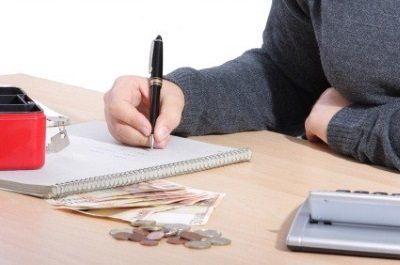Petty cash Accounting | Procedures | Reconciliation | Uses
Table of Contents
What is a petty cash?
Petty cash is the money used to cover small expenses. It is very useful, and can be a deductible business expense. It is important to keep track of business expenses, because in a petty cash, even a penny accounts. Furthermore, it is necessary to find out if even if a small amount of cash transaction is in order.
What is Petty cash fund?
The petty cash fund is an accounting tool that helps you to manage and track small purchases that are not appropriate to make a check payment or using your credit card. When creating a petty cash account, be sure to document the origin of the cash you use to start with, and also keep a petty cash book to track your every petty cash purchases.
How to start Petty cash accounting?
To start your petty cash account, you’ll need a small box where you will keep petty cash funds, a small notebook and sufficient amount to cover the value of petty cash purchases for several weeks. Withdraw the required amount from the bank with a cheque leaf from the cheque book exclusively designated for petty cash account. The purpose for withdrawal should be noted down in the cheque book.
How to Keep a petty cash book?
Keep a book of petty cash to record the purchases you make with your petty cash fund. Start your book by recording each and every expense and the purpose for which the fund was utilized. Every time you make a purchase, make a note in the book that includes date, amount your spend and the nature of purchase. Subtract the amount you spend with the balance you already have in record to calculate the amount left in the petty cash book. Count the amount remaining in your petty cash box regularly to make sure it matches your petty cash register.
Accounting your petty cash purchases
Incorporate the petty cash purchases listed in your petty cash book with your accounting system regularly. List each purchase in your ledger, category wise in order to find the expenses incurred in purchase of supplies or materials, or miscellaneous purchases.
Reconciling your petty cash fund
When your petty cash fund runs out of money, encash fund from bank with another cheque and record the purpose of en-cashing in the cheque book. If your petty cash fund runs out of money every week or two, increase the amount of money you have on hand for petty cash purposes.
How to reconcile your petty cash?
Reconciling petty cash involves various steps as detailed below:
1. Score the opening balance. This can be done simply in a spreadsheet that you keep in the safe with petty cash or a bank statement. It is essential to have the balance of the last reconciliation to compare the recent expenses.
2. Count the cash you have in the safe, which may include some loose change. If it is equal to the opening balance, the work is done and it does not make a reconciliation.
3. Sum up the total of the receipts. Every time someone uses petty cash for business expenses, it is essential to attach a receipt and leave it in the safe.
4. Calculate the total of uncashed checks and promissory notes or IOU with receipts. Some employees may be authorized to use petty cash to cover personal expenses, provided that money back. In such cases, the employee must add a record IOU (instead of a receipt) to the safe when withdrawing cash and then must return the same amount of cash or write a check for the amount.
5. Add the amount of cash from the safe and compare it with the receipt total and the total amount of checks and notes receivable. This sum must be equal to the opening balance at step 1.
6. Report if there is any discrepancy. If the sum of steps 2, 3 and 4 is not equal to the initial balance, it means someone has withdrawn money from petty cash without leaving you note or without attaching a receipt for business expenses in the safe. Use the appropriate means in accordance with the standards of your office to report that money missing from the petty cash.
What are the uses of a petty cash fund
- Petty cash funds are used where a cheque or credit cards cannot payments are not accepted.
- Some small shops or temporary facilities, such as outdoor market vendors do not accept cheques or credit card payments. Petty cash can be used for such expenses.
- Company employees who are not authorized to write cheques or use credit card may need to make small purchases at times, in addition to its regular large purchases. Petty cash comes in handy for such purchases.
- Entertaining clients: Petty cash can be used to reimburse employees who entertain guests with a meal or during an entertainment event as inexpensive film. Some original and itemized receipts are usually required as proof of purchase.
- Office party expenses: The petty cash funds are available to purchase gifts and birthday cakes during any employees birthday celebration, other parties and even to buy pizzas during weekly meetings.
- Office supply expenses: Petty cash can be used if a company runs out of office supplies. It can be used to buy pens, notebooks, ink cartridges printer and batteries.
- Public transport: Employees may be reimbursed for certain forms of public transport, either locally or during a business trip through petty cash. Taxis, buses and subways all fall into this category.
- Postage expenses: Smaller companies that do not have a designated mail room can use petty cash to cover the postage required for sending letters and other packages.



